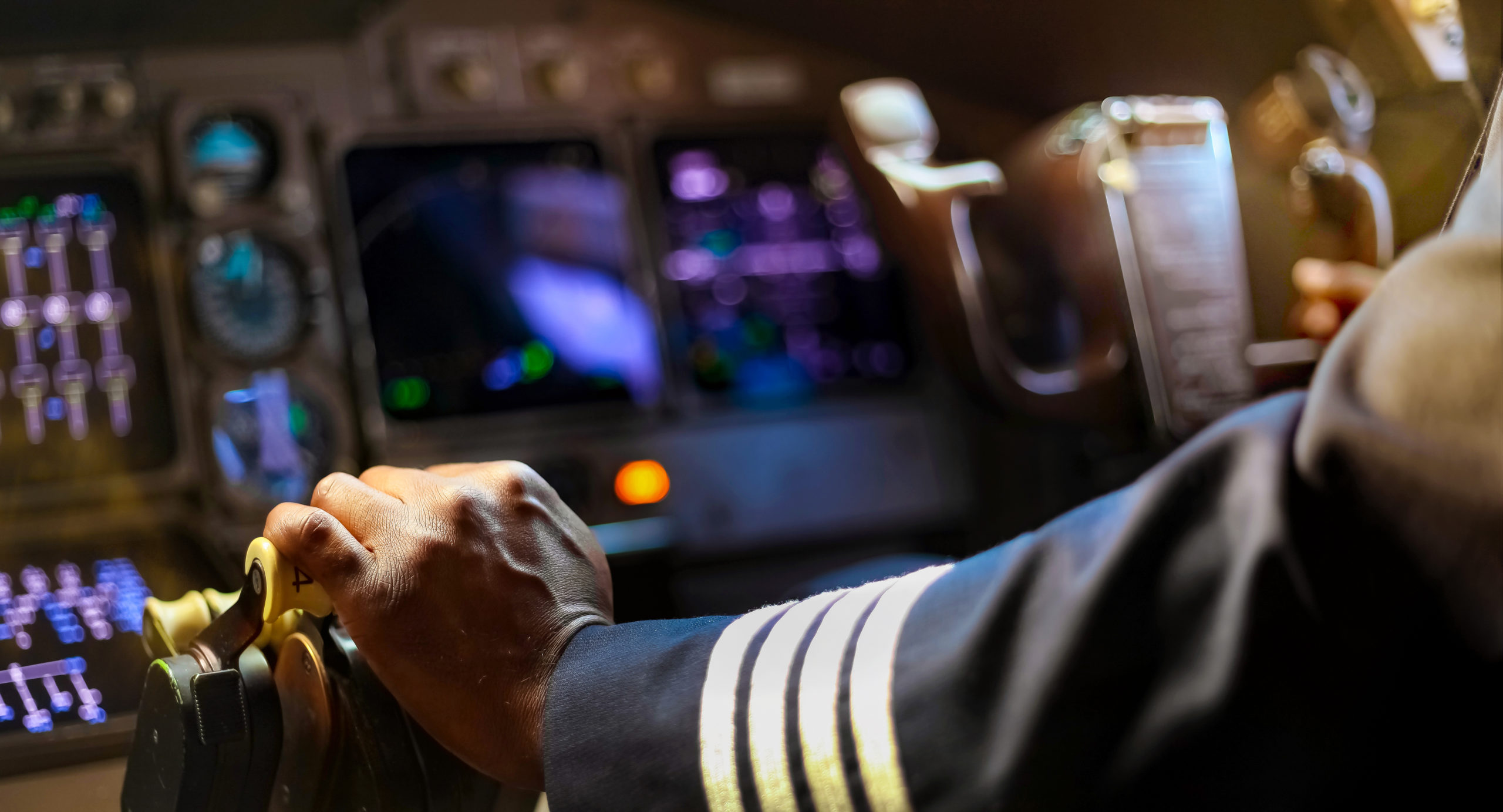Trouble in the Air Rare for U.S. Commercial Flights
When aviation ‘incidents’ become emergencies, pilots trained to stay cool
By Natalie Fiorilli
Published February 10, 2020
Read Time: 4 mins
In the first few weeks of 2020, at least two emergency landings drew national headlines.
On Jan. 14, the pilot of a Delta Air Lines Boeing 777 declared an emergency due to an engine issue shortly after taking off from Los Angeles International Airport. And on Feb. 3, another engine issue on an Air Canada flight from Madrid to Toronto caused the pilot to declare an emergency, turn around and fly back to Madrid–Barajas Airport. Both landed safely.
Despite the dramatic nature of these events, airplane emergencies are quite rare, particularly with commercial aircraft. In 2018, the last year for which global statistics are available, the International Civil Aviation Organization reported an accident rate of 2.6 accidents per 1 million departures for scheduled commercial operations.
“Flying is extremely safe,” said Michael Suckow, an associate professor at Purdue University’s School of Aviation and Transportation Technology. “Fortunately, there really aren’t common emergencies [in aviation]. We don’t like to focus on the one outlier, since there are tens of thousands of safe operations that are conducted daily.”
Most airline events are relatively minor. Blue Sky News reviewed the 62 incidents recorded by the Federal Aviation Administration in the two-week period from Jan. 28 to Feb. 10, 2020, which include commercial and non-commercial flights. Of those, 21 were labeled accidents, such as emergency landings and crashes. The other 41 are called “incidents,” which range from bird strikes to blown tires and hydraulic failures, along with a variety of mechanical issues.
Injuries and fatalities are rare. Only three of the 62 events involved commercial aircraft, with no fatalities.
One commercial incident involved a United Airlines Boeing 737 when the right wing struck a catering truck as it pulled into the gate at O’Hare International Airport. None of the 142 passengers were injured.
The other 59 incidents involved small, private planes, such as Cessnas, Beechcraft and Pipers. Actual emergencies from commercial flights are few, especially when considering how many takeoffs and landings happen each day, Suckow added.
“There might be one engine failure out of 100,000 operations,” he said. “Say you’re driving your car and you have a low tire pressure light come on. Is that an incident, or is it just a maintenance function? The big stuff tends to get reported, but when looking at the percentage of operations, [accidents] are extremely low and extremely rare.”
What happens in the cockpit?
While official reports of the incidents with Delta and Air Canada are pending, both instances share a fairly common emergency landing procedure: decreasing fuel levels to lower the aircraft’s weight before attempting to touch down.
Before returning to LAX, the Delta flight reportedly dumped more than 15,000 gallons of aviation fuel, which fell on a group of adults and children. The Air Canada flight flew for nearly four hours to burn fuel before safely returning to Madrid.
To avoid mechanical damage during landing, most aircraft are required to be lighter when they land than when they take off – this sometimes means dumping fuel or flying to burn it off before landing in the case of an emergency. To prevent fuel from reaching the ground, pilots tend to release the fuel at a higher altitude, allowing it to dissipate in the atmosphere.
But aircraft can still land safely when they exceed their maximum landing weight requirements.
Frank Davis, a retired commercial airline pilot from McMurray, Pa., explained that while some people think if an airplane lands “heavy” it will result in an accident, that’s not always the case.
“Most airplanes can land at their maximum takeoff weight, and their gear is built to handle it,” Davis said, adding that in his approximately 20,000 hours of career flying time, he experienced instances of landing “heavy” and dumping fuel before landing.
Davis recalled one overweight landing in particular.
“I felt that there was no point in dumping fuel and that we could land the aircraft overweight,” he said. “It was the smoothest landing I have made in my life, at that weight. I know that even the firetrucks on the ground commented [on it].”
Airplanes are complicated pieces of equipment, and mechanical issues are not uncommon, Davis said, adding that pilots are usually encouraged to declare an emergency with the control tower, just to err on the side of caution. Dumping fuel is just one of several procedures a pilot must consider during an emergency landing or other incident.
“My No. 1 concern was always for the passengers’ safety,” said Davis. “My No. 2 concern is for the safety of the people on the ground, and third is for the company itself that owned the airplane I was flying.”
Ultimately, being able to handle emergency situations, large and small, is in the nature of the business for pilots.
Suckow, who holds an Air Transport Pilot certificate, a requirement for commercial pilots, has more than 8,000 hours of flying time and serves as a certified flight instructor. When speaking with students at Purdue about the responsibility of becoming a pilot, he often refers to the PBS “City in the Sky” series.
“We talk about the thrill of learning how to fly, but it’s also about the maturing into the command of that,” Suckow said. “Are you ready for the command of what is literally a city in the sky? We talk about what it means to be a pilot – it’s about being mature and making rational decisions, while being able to communicate and keep a level head.”
Watch
This Next
Read
This Next






